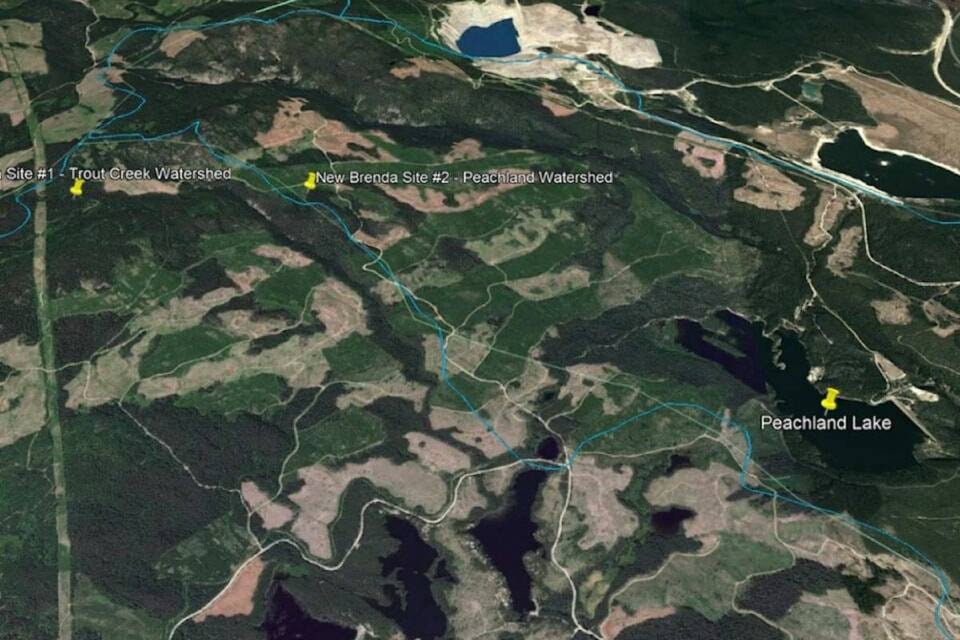Westbank First Nation (WFN) has partnered with a firm developing a major regional waste compost production site at the Brenda Mine site above Peachland.
While the initial investment on the venture with Brenda Renewables Corporation is in the $10 million range, WFN Chief Robert Louie sees it as having the potential to grow into a $100 million-a-year business.
Louie said it’s eyed as a 40-year project to both clean up the toxic residue left behind when the mine closed in 1990 which has historic and future environmental impact significance for the WFN, but also to reduce greenhouse gas emissions and off-set the pressure faced by existing landfills across the southern B.C. Interior.
“I see it as extending the life of existing landfills in various communities…with an idea to start taking in product by November,” Louie said.
The permit approval process is ongoing with the province, he added, noting Regional District of Central Okanagan officials were up touring the site on Thursday.
Louie made the comments in providing an economic update on the Indigenous business impact on the economy at a national, provincial and local level at a Central Okanagan Chamber of Commerce luncheon held Thursday at the Coast Capri Hotel.
Louie said after his presentation in a scrum with local media that Brenda Renewables approached the band council about partnering in the Brenda mine site project.
He said the economic potential and ecological benefits gave the WFN incentive to take up their partnership offer.
“There is already a 120,000-square-foot building on site,” he said.
“I can see this drawing interest from communities dealing with landfill issues all the way from the U.S. border to north of Vernon.”
He said the waste compost byproduct produced from the site would not be competition for the Ogogrow product generated from the Glenmore Landfill, he said, but rather expand that industry in a complementary way.
He described the waste being collected as being organic material and not anything toxic.
“What we want to do is get rid of the toxic material that already exists at that mine site, not add to it,” he said.
Brenda Renewables started working on the project in 2022, initially in partnership with Glencore Canada, which owns the site.
The project would encompass a large dome structure with curing pads and support structures like a scale and office, an anaerobic digestion facility, able to utilize 150,000 tonnes of organic waste annually.
It would produce a Class A compost that could be applied to revegetate the 780-hectare mine site, and produce up to 170,000 gigajoules/year of renewable natural gas to be distributed by FortisBC
At a public forum on the project held two years ago, organized by the Peachland Watershed Protection Alliance, Brenda Renewables officials attempted to dispel some of the misconceptions about the proposed facility and how safe Peachland’s water source will be.
“Brenda Mines straddles the Peachland Creek, where Peachland draws water from, and Trepanier Creek,” said company project manager Rolfe Phillip at the forum.
“The water management features Glencore established takes all existing water from the capture basin at the site, treats all that liquid and dispenses it into Trepanier Creek.
“With Peachland’s latest water treatment facility, they’re now drawing water specifically from Peachland Creek. We’re not discharging there.”
Phillip also clarified that the project wouldn’t be dealing with sewage material.
“At no point will we ever be taking sewer sludge or manure or anything like that,” Phillip said.
“We’re taking already processed biosolids from the wastewater treatment plant and we’re going to take it one step further so we can properly treat everything.”
READ MORE: Compost, renewable gas facility proposed for former Brenda Mines site



